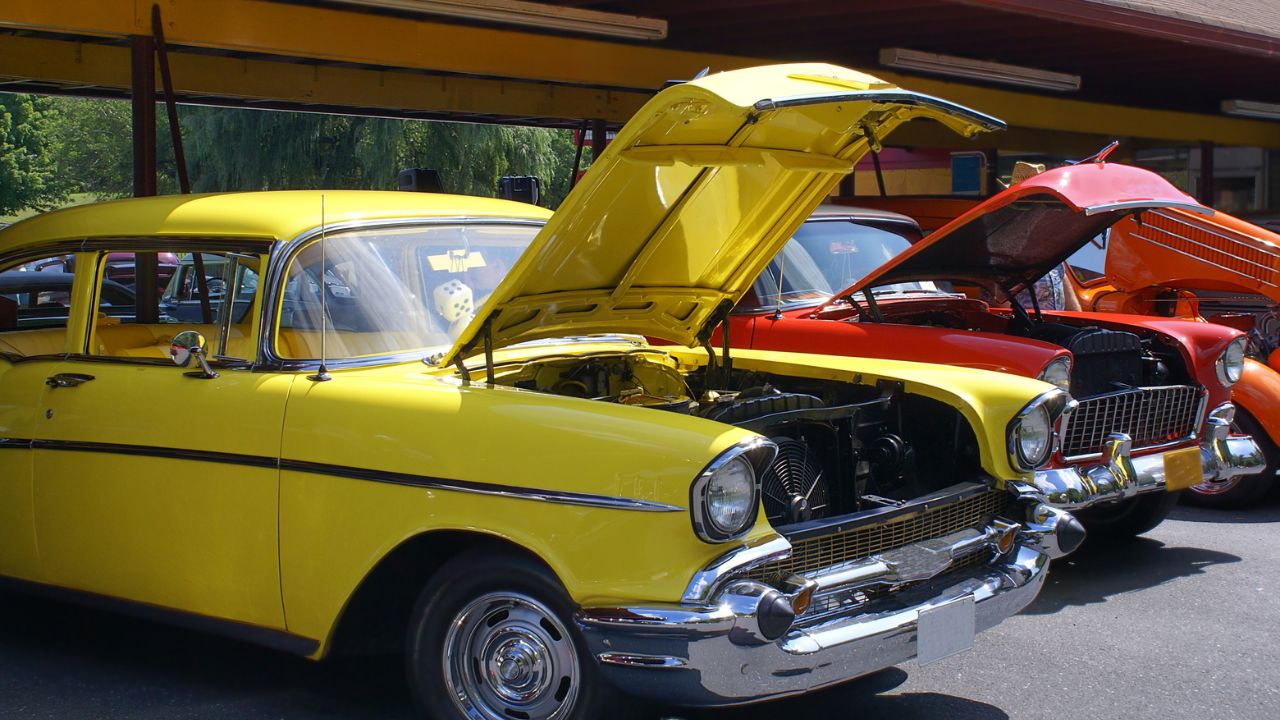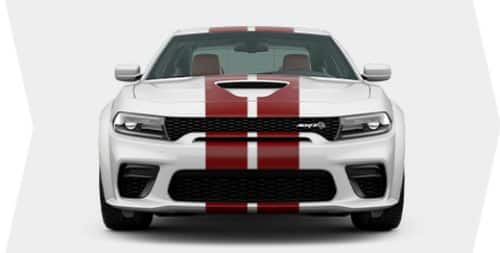
Grand nationals are races designed to highlight America's best muscle cars. These two vehicles are the Chevrolet Impala SS 409 and Chevelle SS 444. Each uses a 6.2-liter V8 engine to produce 415 horsepower. You'll find the SS logo and comfortable seats inside. The SS logo is a distinguishing part of each car's designs and is one of Grand National's most iconic symbols.
Chevrolet Impala SS 409
Chevrolet Impala SS, the first car with a small block V8 engine, was released in 1996. This engine was the very first to be featured in a Chevrolet sedan with front-wheel drive since 1996 Caprice. This engine produced 303 horsepower. It was also equipped with Active Fuel Management. The SS was a sports car that offered luxury and a sporty look. It allowed drivers to take advantage of a variety of driving features. The SS was available in a coupe or two-door convertible.

Grand National muscle car
The Buick Grand National is considered one of the finest examples of American muscle cars. Its turbocharged 3.8 liter V-6 put Corvettes to shame. And its automatic transmission made it a perfect muscular car. While the Buick GNX didn't live up to the standards of a true muscle car, it was still one of the coolest cars to come out of the Buick factory since the GNX era. Even more expensive, it is still hard to find one after thirty years.
Chevrolet Chevelle SS 454
The 1972 Chevrolet Chevelle SS featured a unique instrument cluster. The standard instrument cluster had a speedometer along with a large fuel indicator in a blanked opening. The special instrument panel contained a tachometer as well as a clock. The fuel gauge was moved to the outside edges of the instrument panel. Stereo Stripes or Quad headlights could also be an option.
1970 Chevy Chevelle SS
The interior design of the 1970 Chevy Chevelle is very similar to the iconic muscle car from 1960s with its bench seat as well as the center console. Despite being similar, the 1970 Chevelle SS is distinctive with its large, circular gauges. Optional chrome bumpers and an exhaust system give it personality and flair. This car is truly the embodiment of classic muscle car styling. These are the main features of the 1970 Chevy Chevelle SSS:
1969 Dodge Charger
In 1968, Dodge Charger had become a legendary muscle car. But, it was now time to make it mainstream. Richard Sias, a famous designer for Dodge, designed a monster-shaped vehicle with wide shoulders and a curved shape. The 1969 Dodge Charger, a two-door hardtop convertible with a wheelbase length of 117 inches and a width of 208 inches, was a two door hardtop. It sold 96,100 cars. An optional road/track performance package was also available.

1969 1/2 Dodge Super Bee A-12
This muscle car is one of the most iconic. The 1969 1/2 Dodge Super Bee is an amazing example of this style. The car was made from 1968 to 1971. It had three Mopar V8 engines. The Magnum, 7.2-liter Six-Pack and legendary 7.0-liter Hemi models were available. While the car is rare, this particular example features a supercharged version of the Ramcharger engine and front-wheel drive.
FAQ
How can I prepare to become a mechanic apprentice?
Understanding what you're getting into is crucial. You must understand the workings of cars. You will be able to know exactly where to begin when you arrive at the garage for your first day.
Also, you need to know how fix simple problems, such as tires and lights that aren't working.
This should help you learn how to diagnose issues and repair them yourself.
It is also important to know how the different pieces fit together in order to put them together again.
Finally, it is important to know how tools can be used safely and efficiently.
These are all things that will make you a competent mechanic.
What's the difference between a mechanic and an automotive technician?
The two are similar but not identical. A mechanic repairs cars while an automotive technician does maintenance on them.
A mechanic needs to be able and quick to use their manual dexterity. They must also be able to diagnose problems accurately and repair them effectively.
A technician in automotive is more technical than a mechanic. They must be able and able to read blueprints as well as use tools like drills or wrenches.
They should be able safely to perform complex procedures. They must be familiar with all types of electrical and engine systems.
They should also be able understand how different parts interact.
As a result, a mechanic usually earns less money than an automotive technician. Both jobs offer many possibilities.
Is it difficult to find a job as a mechanic in the automotive industry?
It is possible. Many garages list their vacancies online. Many people simply apply for the fun of it. To get your foot in front of the door, try applying for a few positions to see if any accept student applications. Ask your friends and family to recommend anyone in the field. You might be able to refer someone.
How long is an automotive mechanic apprenticeship
It takes three years to complete an apprenticeship as an automotive mechanic. This includes two years at school and two years working as an apprentice. The first year is dedicated to learning the theory and practical skills of the trade. You will also learn to use tools efficiently and safely during this period. After the completion of the first year, you will spend another year on the job training. Here you'll gain valuable experience in different trades. These periods will also give you the chance to take formal courses.
The last year of your program will be spent earning qualifications and becoming certified. These include NVQs (National Vocational Qualifications), that are given after passing specific industry exams. The HNCs (Higher National Certificates), on the other hand, cover general subjects like customer service and management. City & Guilds certificates can be obtained for individuals who want to learn certain trades.
Is automotive mechanic a promising career?
There are many exciting opportunities in the automotive industry for people who are driven to achieve excellence. Working hard and learning from others is the best way to be successful in this field.
Your job will require you to be a good communicator as you'll be talking to customers and other employees. You must also be willing and able to travel long distances, which can make it difficult to commute.
Consider taking classes at local universities or community colleges if your goal is to pursue a career in the automotive industry. Many schools offer programs specifically designed for students interested in auto repair, sales, or customer service.
You should choose to study mechanical engineering if you want to get a degree. You can get your bachelor's degree in as little as four years.
Many employers will hire graduates straight out from school. Therefore, it is a good idea to look for employment while still pursuing part-time studies.
After you have completed your education, you will likely need some training to be able to work as an automotive technician.
This means you'll need to pass exams such as the Automotive Service Excellence (ASE) certification exam. This test covers topics such engine maintenance as brakes, steering, suspension, etc.
Once you've passed the ASE test, you can apply for a license issued by the National Institute for Automotive Service Excellence.
A license allows you to perform repairs on vehicles owned by private individuals. You will be compensated based on how many services you performed.
It's important to note that not all states require licensing. However, licensing is required for anyone who plans to work outside the home state.
Some states don’t issue licenses until a certain amount has been completed. This may be the case for you.
Do I need to have a degree to work as an automotive mechanic? What about part-time study?
While a degree is not required, it does help. Employers prefer candidates who have completed a full degree. It shows that you've put the effort in and have done everything possible to succeed.
But, this doesn't mean you have to stop working while studying. Some universities allow students the flexibility to finish coursework during summer vacations and resume their studies later in year. Students can also take classes part time throughout the academic year.
Statistics
- The U.S. Bureau of Labor Statistics (BLS) reports that the job outlook for automotive service technicians and mechanics is expected to decline by 4% from 2019 to 2029. (indeed.com)
- There were 749,900 jobs available for automotive service technicians and mechanics in 2016, which is expected to grow by six percent through 2026. (jobhero.com)
- 52% of Mechanics in the United States think their salaries are enough for the cost of living in their area. (indeed.com)
External Links
How To
How to properly diagnose and repair your vehicle
First, look at the symptoms of your car to determine if it needs repair. These steps will help you diagnose your car properly.
-
Check engine lights. The dashboard light indicators, including the engine light, oil pressure gauge, battery light indicator, coolant temperature gauge and RPM gauge, should be checked. If any of these indicators have been flashing continuously for several days it could mean that there is something wrong with your vehicle.
-
Inspect the tire treads. Tires with worn treads could cause problems when handling or braking. It is also important to inspect the wheel treads. They should look clean and be smooth. This can be done by removing the wheels from the vehicle and taking them off. You can check the tread wear with a flashlight.
-
Monitor the level and consistency of your brake fluid. You should always keep track of the amount of brake fluid in your vehicle. You can ensure that your brakes are working properly by monitoring the level of brake fluid in your vehicle. Your brakes may fail if the brake fluid level drops.
-
Make sure to test the suspension system. Vehicles usually have a suspension system that helps absorb shocks and vibrations while driving. It gives you better control and allows for smoother accelerations and decelerations. It might feel uncontrollable or wobbly if your vehicle is suffering from a suspension problem. To determine whether your vehicle may have a suspension issue, you can try to put weight on the rear or front axle and watch the movement.
-
Examine the steering column. The steering columns are what connect the steering knob to the rest. Steering columns can be damaged by accidents. You should replace your steering column if it feels loose or unstable.
-
Observe the exhaust pipe. The exhaust pipes are responsible for moving gases from the combustion chamber into the atmosphere. You can let harmful fumes into your home if your exhaust pipes crack or leak. If your tailpipe bends, it is important to fix it immediately.
-
Look under your hood. If you see anything unusual, take a look under the hood. You could have fluids leaking from the engine. A professional technician should be contacted if your engine compartment emits an unusual smell.
-
You should inspect your air filter. Your vehicle's air filter collects dust and debris from the outside environment. Your vehicle will run less well if it has a dirty filter. Replace your air filter regularly.
-
Verify the fan belt. Your vehicle's fanbel is what connects the engine and the transmission. If the fan belt fails, the engine won't start. Replacing the belt is simple. All you need are a screwdriver & pliers.
-
Make sure you inspect the radiator hoses and hoses. The radiator-hose carries water to the engine. It can become cracked or damaged and leak hot liquid onto your engine. You only need a pair of needle-nose pliers and a small wire brush to repair the hose.
-
Be sure to inspect your windshield wipers. Windshield wipers use electricity to wipe away rain and snow. If they stop working, they could leave streaks on your window glass. Simply change the washer oil to fix the problem.
-
You should inspect the cables. Batteries provide power to electrical systems inside your car. Always disconnect the negative wire before you replace batteries. Failure to do so can damage your alternator.
-
You should check the headlights. Headlights are used to illuminate the road ahead. They can make it difficult to see if they stop working. Inspect the bulbs for signs of burnt out.
-
Be sure to check the lights. Lights warn other drivers when you approach them at night. You may be distracted by the light and end up in an accident.
-
Make sure you check your brakes. Before you get in a car accident, your brakes will be slowing down your vehicle. You could lose control of the car and cause a crash if they don't work properly.
-
Change the oil. Oil keeps your engine lubricated. It helps keep metal parts from getting too worn down. Changing the oil every month is recommended.